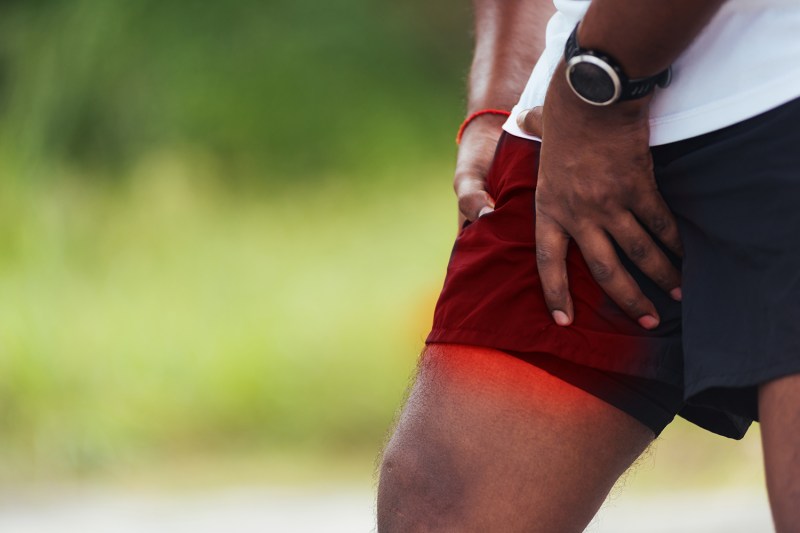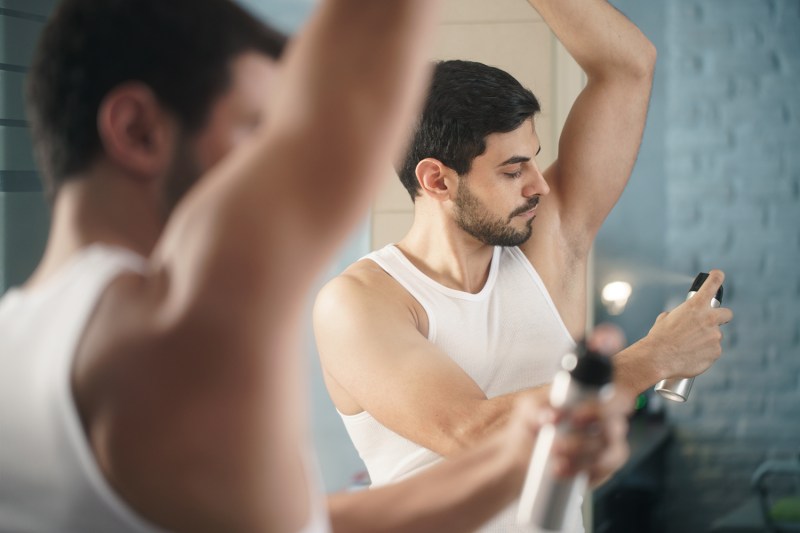Chafing sounds like a small thing. After all, it’s just up the road from rubbing, right? So that means it’s really not that big a deal. Wrong. Any runner or workout warrior who’s experienced chafing will tell you otherwise, myself included. That’s especially true if the chafing gets out of control — it’s a truly miserable experience, trust me.
But it is preventable. That’s one of several important facts associated with chafing, but you have to know what steps to take, how to implement them, and what products to use if you need help. So, let’s dive in and find out how to prevent chafing.
What causes chafing?

For the most part, chafing is about friction. It happens when your clothing rubs against your skin over and over again, and it’s much worse when you’re sweating. It can start out as a mild annoyance, but if you don’t deal with it quickly and effectively, it can turn into a major problem.
Several contributing factors may also be involved. Poor-fitting apparel is one, and so is clothing that’s cheaply made. New workout clothing that hasn’t been broken in properly can be a problem, as can the sensitivity of your skin.
Weather is another factor, along with the length of your workout. While it’s true that chafing can happen at any time of year, it’s also much more common in warm spring and summer weather, especially when the humidity gets high. Longer workouts made you more susceptible, too. The lack of prevention can also be involved, but that one’s very easy to address, so let’s go there.
Chafing protection is basic but important

So how can you prevent chafing? Start by taking into account the length of your run or workout, and dress appropriately. Wearing a cotton shirt if you’re going for a long run is one way to invite chafing, especially when there’s plenty of great apparel and gear out there to help you stop this problem before it gets started.
You do need to break that equipment in, though. Just as you wouldn’t go for a long run on a hot day when you haven’t broken in your shiny new running shoes, you need to break in those new shorts and shirt you’ve been dying to try. That means starting them out with a shorter workout to ensure there are no problems with chafing, then ramping up accordingly.
Knowing your skin is a big deal, as well. Is it super sensitive? More so in the heat, or worse in the cold? Answering those questions will give you some hints about when and where to apply the wide array of lubricants that can reduce or even eliminate chafing, so you can focus more on your run.
Where chafing typically occurs

Now, let’s talk about body parts. This is obviously a sensitive subject, but certain parts of our body are more prone to chafing, even though chafing can theoretically occur anywhere.
Start with the groin and thigh area. It’s dark and warm down there in your nether regions, which means there are plenty of spots for sweat to hide and exacerbate chafing once the action starts and you begin sweating. Thighs can rub tougher when you start running, too, so that’s another place where problems can easily start.
For many men — and women, too — it’s also the area where chafing can go big in a hurry, which can easily leave you in a state of abject misery. If you get itchy, inflamed, or sore anywhere down there, don’t ignore what you’re feeling, unless you want to feel a lot worse down the road.
The armpits are another common chafing area. Once again, it’s a dark underworld in that area, and it’s also an area where sweat can turn from a few drops to a steady trickle. Many running shirts are designed to wick away that kind of moisture, but if you’re doing interval or HIIT training on a hot summer day, for instance, your clothing is going to need some help.
Finally, let’s talk about men’s nipples. Um … eww? Yeah, not a fun subject, but it’s important to mention how much they hurt when chafing starts anywhere in that area. I’ve run longer road races and marathons that turned incredibly miserable when I discovered that all my well-laid plans to prevent sweating had failed completely. Men’s nipple bleed easily, too, and that’s a special kind of misery I wouldn’t wish on my worst enemy.
How to prevent chafing with products

The good news is that there are plenty of great products to prevent chafing, and dermatologists are learning more all the time about how to increase the effectiveness of those products.
Before these products were available, though, there were old-school remedies. Deodorant and baby powder were two of the big ones, and while they were effective to some extent, they also had some specific limitations. Take old-school deodorant. It used to have nasty ingredients like aluminum and alcohol. These can easily make chafing worse, and sometimes they prevented the product from doing its basic job when it comes to stopping chafing.
Baby powder is another ingredient with a mixed history. It does dry out areas where sweat is about to occur, but it can also irritate the entire area where it’s applied, too. The talc that’s an essential ingredient in many baby powders doesn’t have a great history, either, but thankfully it’s quickly being phased out as new and better products come on the market.
One product with a solid history is Body Glide, which used to be simply be called Glide and is one of my favorites. It comes in a stick, like deodorant, and it’s easy to apply and nongreasy. It’s especially good at preventing nipple chafing, although I will admit I’ve grabbed a dab of old-fashioned Vaseline and applied it to the nips when I’m out of Glide and don’t have time to order or grab a refill.
Skincare companies are rushing to supply new products to fill this void. One of the newest ones is the Chafe Cushion from Fur, which uses modern skincare ingredients to provide even more comfort while still doing the basic job.
How to treat chafing if it’s more advanced

Finally, let’s talk about treatment. For this part, we’ll assume you’ve overdone it in your workout and shortchanged yourself on prevention. Not to worry, though — there are options and procedures that can help you out of your predicament.
First thing to remember in this scenario is that you have a motto: Protect, protect, and protect some more. It’s also important to remember that you may need to cut back on your runs or workout action for a day or three, as painful as that might be for those of us who are hardcore endorphin junkies.
There’s usually no need to see a dermatologist right out of the gate when this happens. Indeed, the treatment options are fairly uniform, so we’ll turn to the folks at the world-famous Cleveland Clinic to give us the basics:
“To help stop chafing, discontinue whatever activity caused the condition. If you don’t avoid the situation that caused the infection, you’ll make your symptoms worse. By simply eliminating the irritant, you should be able to get rid of chafing.”
“To heal chafing at home, first, clean the affected area completely with mild soap and water. After you’ve cleaned and dried the infected area, apply an aloe vera gel. Aloe vera may help relieve any pain and prevent further infection. Then, apply a layer of petroleum jelly to help heal irritation and prevent the chafing from getting any worse. To treat chafing in your groin area, you may try applying cornstarch to help absorb excess moisture.”
It may take a few days, but following these basic steps will help you stop the chafing before things get out of hand. If things get worse, though, or the area where you’re experiencing chafing gets infected, it’s important to consult a doctor or a dermatologist right away. You’ll likely be taking an antibiotic or a corticosteroid, and that will shut you down for a while, so the old saw about an ounce of prevention definitely applies.



